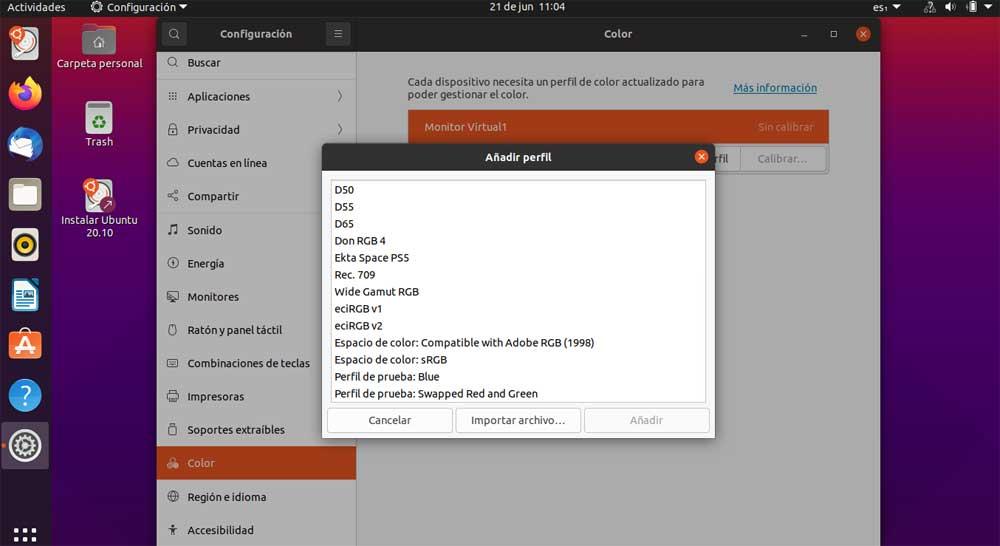When dealing with our computer on a daily basis, we ask its operating system to be stable and secure, among other things. This is something that of course extends to the different Linux distributions that we can use. At the same time, the many functions that allow us to adapt the software to our needs are always appreciated.
With all this, to a large extent, we can be more productive when working with our computer, its system, and the different installed applications. But as we say, most operating systems offer us a series of parameters and functionalities to customize their use. In this way we manage to improve the different components that we have installed on the computer, or adapt the software itself to our needs or preferences.
All this refers to elements of the importance of the keyboard and the mouse, the printer or the screen that are part of our computer. In fact, this last element we are referring to could be considered one of the most important of the entire team. In most cases, investing a little more money in this screen that we are commenting on, it will be appreciated in the future. It is for all these reasons that we are going to show you below how the different Linux distributions allow us to calibrate our monitor.
And it is that as you know, in the market there are many manufacturers and models of this type of hardware elements. Also, depending on the type of use we make of our PC, we will have to calibrate the color in one way or another. For this, the open source distributions that we are talking about offer us a very useful integrated function.
Calibrate the color of your screen directly in Linux
Once we know this, then we will show you how you can carry out this process in the simplest way. It is true that we can use certain applications that help us calibrate the color of our monitor. But in this case it will not be necessary for us to use external software solutions for all this. At first, it is enough that we click with the right mouse button on the Linux desktop.
Once we have the corresponding context menu in view, we click on the option called Configuration in Linux. Here we are going to find a good number of sections and parameters that allow us to adapt the operating system to what we want. Therefore, in this case we only have to look for the section called Color, which is what interests us now.

If we have several screens installed on the computer, first of all, we will have to choose the one on which we want to perform the color calibration. We just have to click on it to start the process. Of course, at the same time it is worth knowing that we have a series of predefined profiles found in the operating system. This will be very helpful, especially if we are new to this type of configuration.
In this way we will be able to largely adapt the operation of the screen of our computer in Linux depending on the work that we carry out. To all this, we can add that we have the possibility of saving our personalized profile after calibration in order to load it only when we need it.














